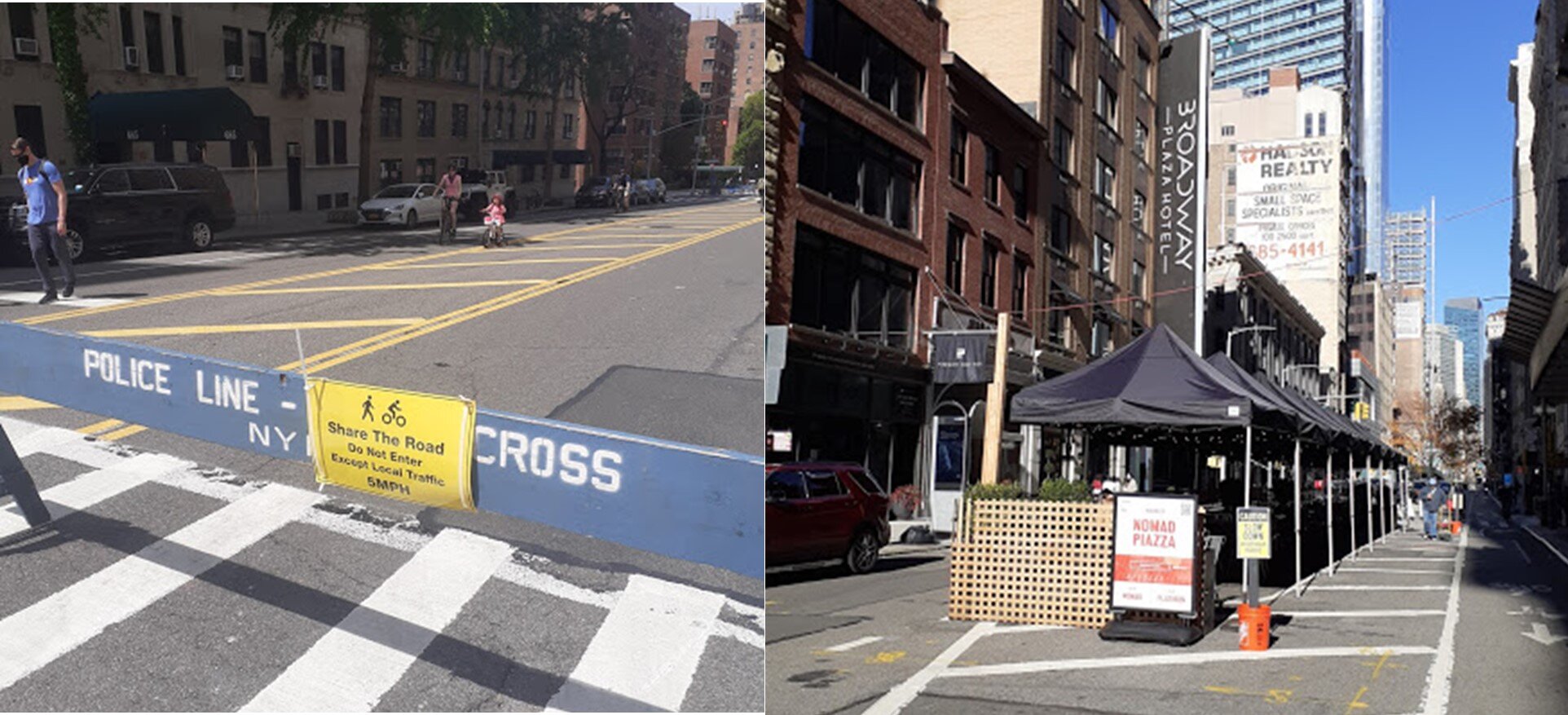Closed streets in Manhattan, NYC. The initiative to open streets to pedestrians allowed communities to use public spaces - mainly in high-density neighborhoods - and was crucial to support small businesses during the COVID-19 shutdown. Author: Bruno Ragi (2020).
The COVID-19 pandemic and its restrictions have deeply changed the relationship of citizens to their streets, public spaces, and facilities. This crisis has shown the importance of public open spaces in combating the pandemic, either by directly limiting the spread of the virus, or providing ways for people to safely relax and carry out their livelihood. However, it has also demonstrated how public spaces are unevenly distributed throughout many cities - especially in low-income neighborhoods, where there are few shared open spaces such as parks, plazas, or playgrounds, highlighting the social and racial inequities that persist in our society.
By revealing successful strategies and tactics, planners, designers, and community leaders have pointed the way towards more inclusive and adaptive methods in public spaces planning. From re-allocating road spaces to pedestrians and local businesses in NYC to adapting areas for food distribution or community food gardening in Rio de Janeiro, the shared use of streets and other open spaces has shown how public spaces have the power to be multi-functional and adaptable, helping our communities to address equitable access and envisage an end to the pandemic worldwide.
